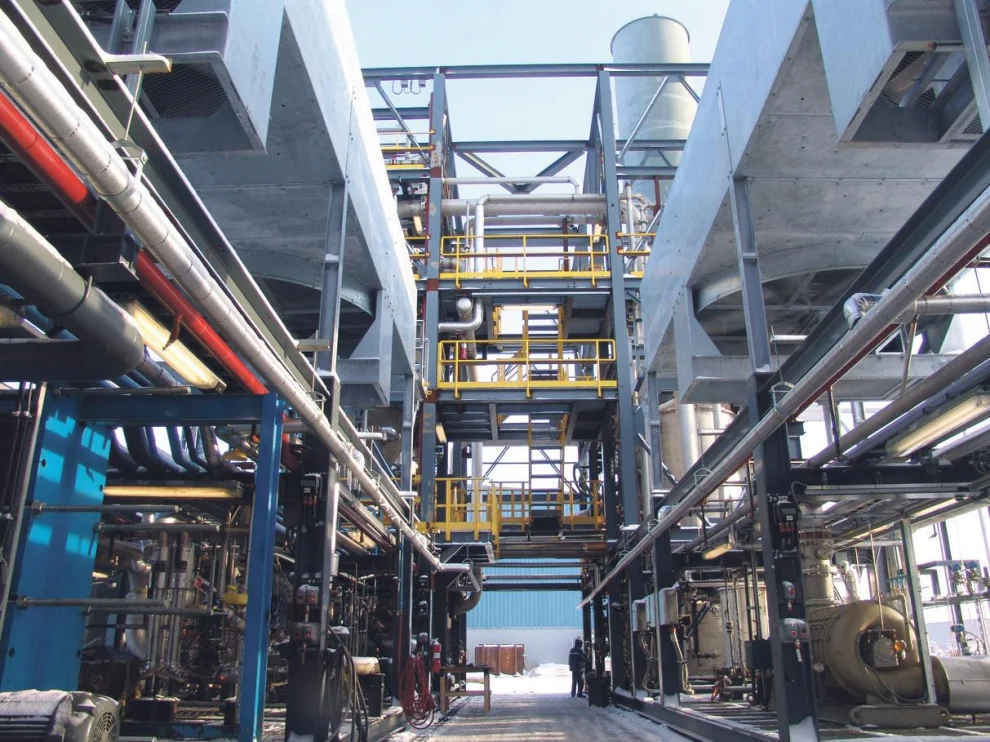
A CONTROVERSIAL plan to build a pyrolysis unit at Waterloo, Pembroke Dock has been withdrawn from consideration by the County Council’s Planning Committee on December 16. The application will be considered at a later date. The planned development at the Ledwood’s Engineering site proposes to generate ‘syngas’ by thermal treatment of oil sludge, and another by-product called filter cake. The gas produced would then be burned to produce electricity to be sold to the National Grid. Oil waste will also be stored on the site. The planning application also refers to the storage and burning of office waste, stating the burning of such waste will be forthcoming from a contract with “a local provider”. It is not clear which sole provider (as specified in the planning application) has either taken an option or committed to such a contract.
Very few organisations in the locality produce the volume of waste that could support such an operation as a sole customer. The applicant is shown as a Mr Peter Beaton of Barcud Energy Ltd, whose address is listed at 110 Whitchurch Road Cardiff, the location of an accountancy practice. Mr Beaton is one of five current directors of the company, which last filed accounts showing it as dormant in June 2013.
The Herald understands that one County Councillor, Pembroke Dock Market Ward representative Brian Hall, has attempted to allay the fears of those who are against the construction of the pyrolysis plant. It is alleged that Mr Hall has personally approached some residents in Waterloo and told them that their environmental concerns are misplaced. Councillor Hall sits on the County Council’s Planning Committee. The development proposed would occupy in excess of 2,100 square metres, process 17,500 tonnes of waste and – it is claimed – create a dozen full time equivalent jobs.
A report from Natural Resources Wales has directed that a raft of assessments be carried out before planning permission can be granted. There is no sign on the County Council’s planning portal that those works have been factored into the planning application as it stands. Fears have been expressed that the height of the flue stack would direct particulate smoke pollution towards Cosheston and further up the Haven waterway. In addition, residents have expressed serious concerns about the volume of traffic to and from the site from what is an already busy road, leading to and from Pembroke Dock’s ferry port.
The Herald spoke with Friends of Earth Cymru, and a spokesperson expressed grave concerns about the health effects of pollution from the plant: “There is not enough detail provided in the application about the public health impact of the plant. Children, the elderly and those with existing complaints, such as asthma, could be badly affected.
“The area around the Haven is already a hotspot for respiratory illness and problems as a result of existing pollution. This could make it worse.” Speaking before the proposal was withdrawn from consideration, local Councillor Sue Perkins, in whose ward the proposed development would take place, told us: “I have been collating the views of my constituents and Pembroke Dock Town Council in relation to this planning application and hope to be addressing the planning committee in person as the local member. At this moment in time I am currently finalising the responses which I have received.”
Speaking as a concerned town resident, Pembroke Dock Central Ward Town Councillor, Margaret Murton told The Herald: “We neither want nor need this development. It will be detrimental to Pembroke Dock. “We have asked a series of questions and they have not been answered. These plants are usually placed near refineries. Appropriate power cabling is available very close to Valero. This plant will need new cabling. There are pre-existing issues with the condition of the ground upon which this is intended to be built, especially with methane gas emissions. “Why on earth has it been placed near a residential area?”
















Add Comment